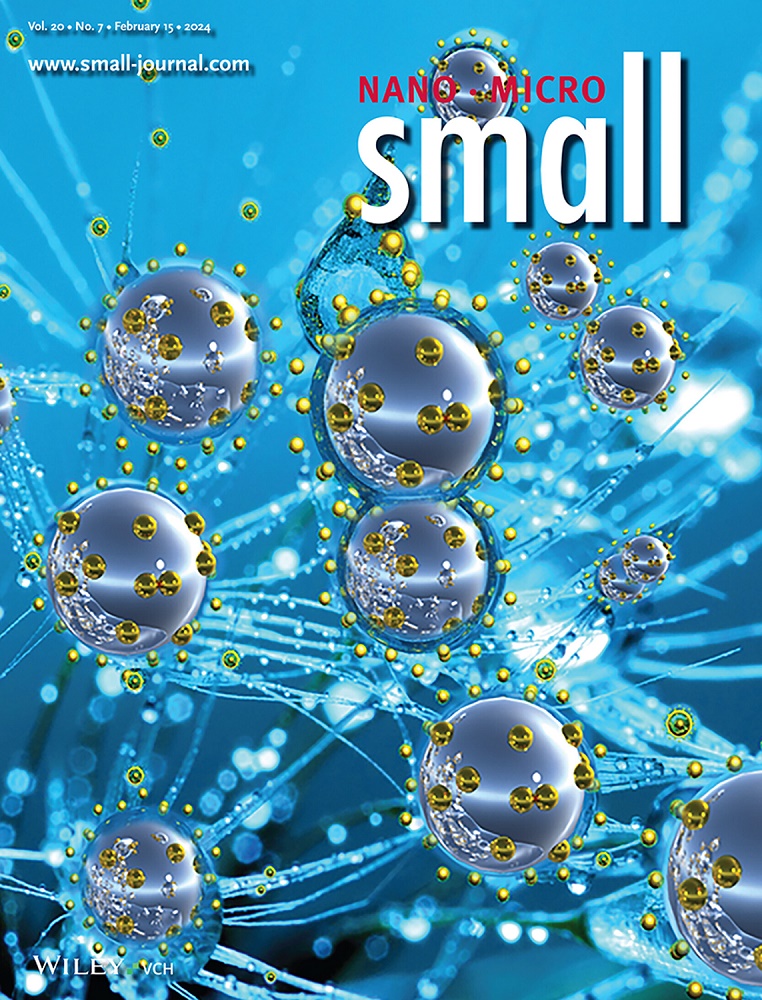Self-Healable and Recyclable Bio-Based Crosslinked Polyimide Hybrid Dielectrics Enabled by Molecular Chain Tailoring.
IF 12.1
2区 材料科学
Q1 CHEMISTRY, MULTIDISCIPLINARY
引用次数: 0
Abstract
Growing environmental concerns about petrochemical plastics are driving the need to explore green and sustainable alternative materials. Polyimide (PI), as a typical petrochemical material, has a unique ordered molecular structure and tightly entangled molecular chains, making it difficult to heat form, and the recycling back to their original form is virtually impossible after damage. To overcome these obstacles and create next-generation sustainable dielectrics, a strategy to realize the partial disassociation and reassembly of imine bonds in PI via constructing a dynamic covalent network is proposed, thereby endowing PI hybrid dielectric with self-healable and recyclable abilities. In this case, the dynamic covalent network is achieved by polymerization of a bio-based crosslinker with PI oligomers. Therefore, the film has an excellent self-healable and polymer-monomer recyclable capability after electrical or mechanical damage. Furthermore, the carbon fiber reinforced composites (CFRCs) formed by film precursor and carbon fibers (CFs) also have a non-destructive recovery rate of up to 100%. This high-performance, reusable, bio-based crosslinked PI hybrid dielectric provides a prime example of an advanced sustainable insulating dielectrics.由分子链裁剪实现的可自我修复和可回收的生物基交联聚酰亚胺杂化电介质。
对石化塑料日益增长的环境担忧正在推动探索绿色和可持续替代材料的需求。聚酰亚胺(PI)作为一种典型的石油化工材料,具有独特的有序分子结构和紧密纠缠的分子链,难以加热成型,损坏后几乎不可能再循环回到原来的形态。为了克服这些障碍,创造下一代可持续电介质,提出了一种通过构建动态共价网络来实现PI中亚胺键的部分解耦和重组的策略,从而赋予PI混合电介质具有自愈和可回收的能力。在这种情况下,动态共价网络是通过生物基交联剂与PI低聚物的聚合实现的。因此,薄膜具有优异的自愈性和聚合物-单体在电气或机械损伤后的可回收性。此外,由薄膜前驱体与碳纤维(CFs)形成的碳纤维增强复合材料(CFRCs)也具有高达100%的无损回收率。这种高性能,可重复使用,生物基交联PI混合电介质提供了一个先进的可持续绝缘电介质的主要例子。
本文章由计算机程序翻译,如有差异,请以英文原文为准。
求助全文
约1分钟内获得全文
求助全文
来源期刊

Small
工程技术-材料科学:综合
CiteScore
17.70
自引率
3.80%
发文量
1830
审稿时长
2.1 months
期刊介绍:
Small serves as an exceptional platform for both experimental and theoretical studies in fundamental and applied interdisciplinary research at the nano- and microscale. The journal offers a compelling mix of peer-reviewed Research Articles, Reviews, Perspectives, and Comments.
With a remarkable 2022 Journal Impact Factor of 13.3 (Journal Citation Reports from Clarivate Analytics, 2023), Small remains among the top multidisciplinary journals, covering a wide range of topics at the interface of materials science, chemistry, physics, engineering, medicine, and biology.
Small's readership includes biochemists, biologists, biomedical scientists, chemists, engineers, information technologists, materials scientists, physicists, and theoreticians alike.
 求助内容:
求助内容: 应助结果提醒方式:
应助结果提醒方式:


